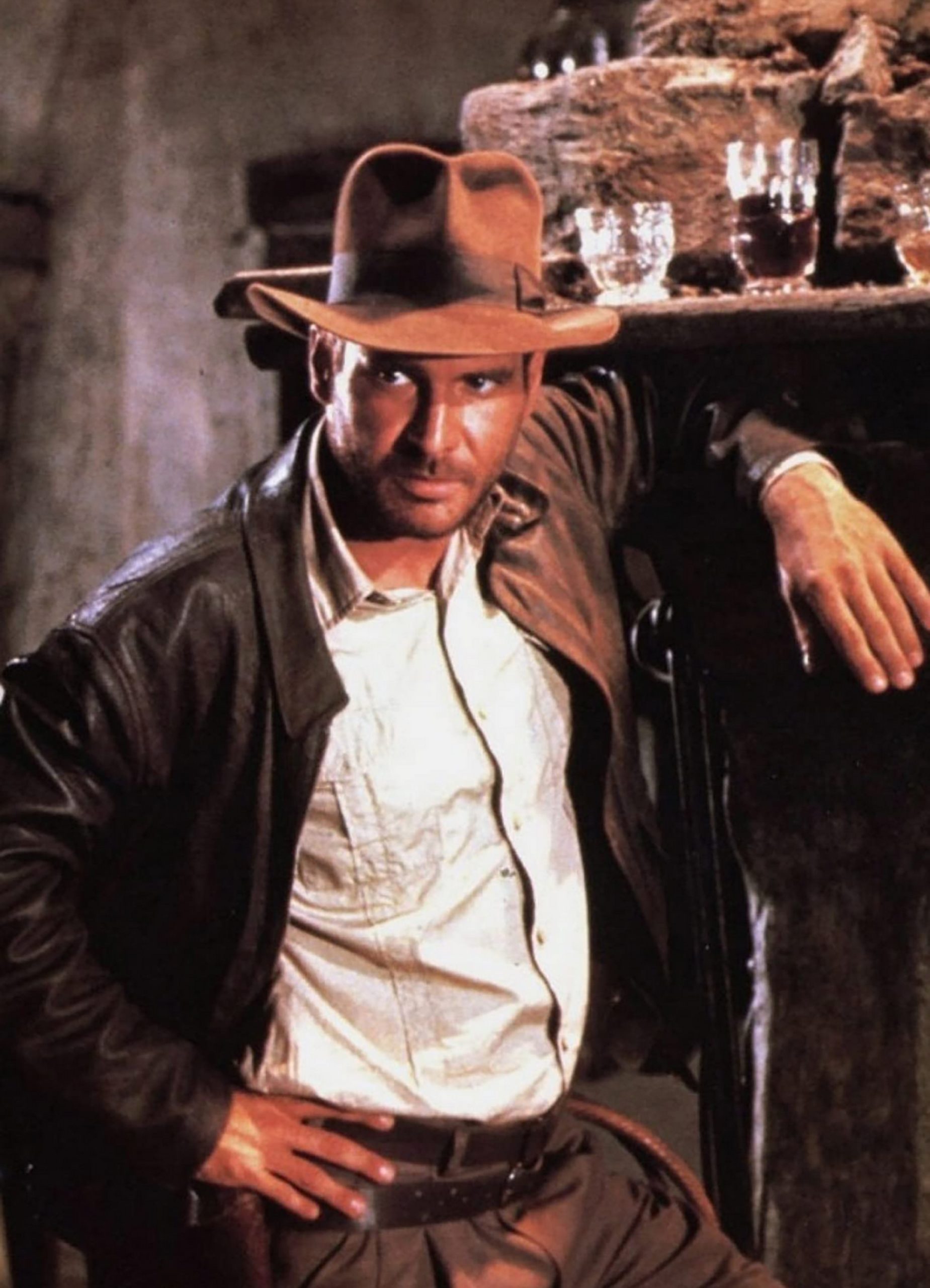
- Golden Globe Awards
The Birth of Indiana Jones
The year was 1977, and a young George Lucas and an even younger Steven Spielberg were talking on a beach in Maui. Lucas was 33 years old; Spielberg was 31.
Lucas had already written and directed 10 short films and respectably successful two full length features, THX 1138 in 1971 and American Graffiti in 1973.
He had also partnered with Francis Ford Coppola in 1968, founding the studio American Zoetrope and producing Coppola’s Finian’s Rainbow. Meanwhile his fascination with Flash Gordon had led him to write and direct his first blockbuster movie: Star Wars: Episode IV – A New Hope.
He was exhausted.
His best friend, Spielberg, was equally bone-weary. His two pictures, Jaws and Close Encounters of the Third Kind, had been a huge success, but as the two friends had learned, imagining a great picture is one thing, having it up there on the silver screen is another matter entirely.
Lucas and Spielberg had two things in common beyond their friendship: they both loved watching and making movies, and they were both fervent fans of the adventure pictures from the 1940s and 1950s.
Lucas especially, had loved a couple of B movies: China, from 1943, with Alan Ladd, and Secret of the Incas, from 1954, with Charlton Heston.
Both of the films featured a similar main character: an adventurous but not necessarily courageous man who finds himself in trouble in an exotic locale.
Both of the main characters were dressed in a worn-out leather jacket and a fedora.
Back in 1973 Lucas had written a rough outline for an adventure movie, whose title at the time was The Adventures of Indiana Smith. Lucas defined the main character of the story as “a bounty hunter of antiquities.” He’s a professor, a PhD. “People call him doctor,” but he’s a little “rough and tumble.” The storyline, according to Lucas, would be “better than James Bond – a James Bond film without the hardware.”
He showed the outline to Spielberg, and Spielberg liked the idea.
The two friends left the beach with a plan – Lucas’ synopsis would be the inspiration not just for a movie, but for a whole series of films, just like those of the ‘40s and ‘50s that they loved so much.
The deal was sealed: Lucas would direct, Spielberg would produce, and Lawrence Kasdan, who had already co-written Star Wars: Episode V – The Empire Strikes Back for Spielberg, would write the script.
The three set up their development office in a small house in Sherman Oaks, a suburb of Los Angeles which was close to several studios in the San Fernando Valley.
There, Lucas and Kasdan began to flesh out who would be the main character and decide how the story should evolve. This would involve many weeks of debates and months of development, adding new ideas and making changes to the old.
They decided that the pace must be one of nonstop adventure. In a transcript of a long conversation between Lucas and Spielberg, we hear Lucas say that the rhythm of the movie has to be “one set piece after another.” Spielberg, warming to the idea, adds, “What we’re doing here, really, is designing a ride at Disneyland.
The choice of an enemy was an easy one: the Nazis: “The hero chases Nazis, Nazis chase the hero, and everyone races to find the Ark of the Covenant,” says Lucas.
Unexpected elements begin to bubble up from the minds of Lucas and Spielberg, with Kasdan adding twists. “I have a great idea!” we hear Spielberg exclaim. “There is a sixty-five-foot boulder, that’s form-fitted to only roll down the corridor, coming right at him. And it’s a race. He gets to outrun the boulder!”
And who should be the hero of the adventure series?
In the long series of conversations throughout the film’s development, Lucas, Spielberg and Kasdan mention all the stars of action films they admire: Eli Wallach, from The Good the Bad and the Ugly – “he’s a goofy character but at the same time he’s very dangerous and funny,” says Kasdan. He also mentions John Wayne, Clint Eastwood, Sean Connery – “They are really good at what they do as a very dangerous person.” Toshirô Mifune – “He’s a real professional. He’s really good. And that is the key to the whole thing. That’s something you don’t see that much anymore.”
The lists were almost endless, but the wardrobe of the character was never in doubt. “Khaki pants, he’s got the leather jacket, that sort of felt hat, and the pistol and holster with a World War One sort of flap over it,” says Kasdan. “He’s going into the jungle carrying his gun. The other thing we’ve added to him, which may be fun, is a bull whip. That’s really his trademark. He is an archeologist and an anthropologist. A Ph.D. He’s a doctor, he’s a college professor.”
By 1979 the funny and dangerous archeologist had a name – he was no longer Indiana Smith, but Dr. Henry Walton “Indiana” Jones, Jr.
Originally the part was offered to Tom Selleck. At first, Lucas seemed OK with Selleck, but he changed his mind. It was then that Harrison Ford, who had worked with Lucas on both American Graffiti and Star Wars, received an unexpected phone call.
“I’m gonna send a script up to your house,” Lucas said to Ford. ‘I want you to read it right away. I want you to read it in an hour. “
Ford never forgot this day: “I went over to Spielberg’s house – I’d never met Steven Spielberg before – and I guess about an hour later I had the job.”
And from the Hawaiian beach to the Los Angeles phone call a new whole series of action movies was born.